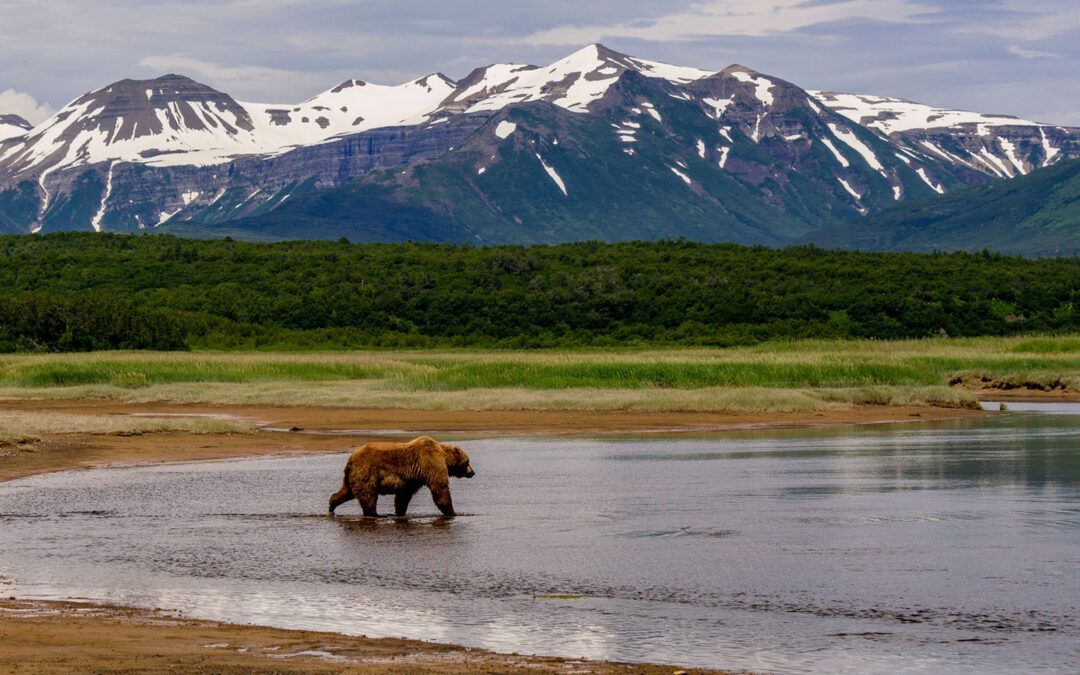by John Clayton, Writers on the Range
When my friends and I encountered the fresh grizzly bear scat, we were deep in Wyoming’s Teton Wilderness, 20 miles from a trailhead. I’d seen grizzlies before—from the car. But this experience was on a whole other level. I felt vulnerable, nervous. I also felt fully alive.
That feeling owes much to the Wilderness Act, which became law 60 years ago, in 1964. When President Lyndon B. Johnson created a nationwide system of wild landscapes “untrammeled by man,” it gave physical expression to an unusual attitude toward land.
The attitude could be summarized as: In the wildest parts of America, humans come second. What comes first is the land, its water and its wildlife. If the grizzly that left those droppings had confronted us, and I’m glad it never did, we lacked the resources of civilization to protect us.
If I’d fallen off a cliff, there was no cell service to call 911. If a freak snowstorm made us cold, wet and miserable, all we could do was suffer. In wilderness, Mother Nature won’t kiss a boo-boo to make it better.
There’s something elemental about being on your own, exposed. You’ve made a choice based on your values about the outdoors. As a result, you feel the power of larger forces — and sometimes, if you’re lucky, even the power of yourself.
Before the Act became law, American culture prioritized pulling all the resources we could out of the land by drilling, mining, dam building, logging, over-grazing. We barged through habitat, flattened forests and plowed prairies. We replaced old growth with board-feet of timber, canyons with cubic meters of water, and grasslands with barrels per day of oil. We’re still doing that on 95% of public land.
But the Wilderness Act acknowledged that, in some places, the land should be left as unexploited as possible. It defined wilderness as being “in contrast with those areas where man and his own works dominate the landscape.”
Preserving wildness calls for restraint. It calls for motorized users, e-bikers, mountain bikers, pilots, snowmobilers, technical climbers with hardware and drone flyers to recreate somewhere else. Yet hiking, hunting, boating, fishing and horseback riding are all allowed in wilderness, as well as grazing if grandfathered in.
The Act’s primary author, Howard Zahniser loved hiking in wild places and he was determined: In eight years of lobbying Congress for The Wilderness Society, he helped rewrite the bill 65 times. By the time the Act overwhelmingly passed — 73-12 in the Senate and 374-1 in the House — Zahniser had died of heart disease at the young age of 58.
The Act is often discussed in terms of the acreage it protects, now comprising 806 wilderness areas and 112 million acres, roughly half of that in Alaska. Yet it’s really about nature being the boss.
In wilderness, we recognize that always getting our way can devalue ecosystems. It can harm wildlife, clean water, fresh air and other widely shared resources. It can cause us to scorn Indigenous people’s connections to the land when we should be honoring them.
Wilderness is not the only place we embrace not getting our way, just as the U.S. Capitol building is not the only place we embrace democracy and Civil War battlefields are not the only places we honor fallen soldiers. With wilderness as reminders, we can also consider not being the boss in a city park or backyard while watching birds or growing native plants.
Threats to keeping wilderness wild, however, have never subsided. Sixty years have brought us innumerable technologies to help us get our way while recreating in nature. And as we’ve realized that making nature more accessible might make it more inclusive and its fans more diverse, some of us are tempted to relax recreational restrictions in wilderness.
That would miss the point. “We must remember always that the essential quality of the wilderness is its ‘wildness,’” Zahniser said. “We must not only protect the wilderness from commercial exploitation. We must also see that we don’t ourselves destroy its wilderness character in our own management programs.”
Honoring wilderness ideals is especially important today because it represents the same lesson that we should be learning from climate change: People can’t control nature. Thanks to the Wilderness Act, we can celebrate that some places remain free of our habit of changing everything — just because we can.
Photo: A grizzly bear roams its home territory in Alaska wilderness.
 John Clayton is a contributor to Writers on the Range, writersontherange.org, an independent nonprofit that promotes lively dialog about the West. He lives in Montana and writes the newsletter Natural Stories (photo by Ted Kim).
John Clayton is a contributor to Writers on the Range, writersontherange.org, an independent nonprofit that promotes lively dialog about the West. He lives in Montana and writes the newsletter Natural Stories (photo by Ted Kim).


